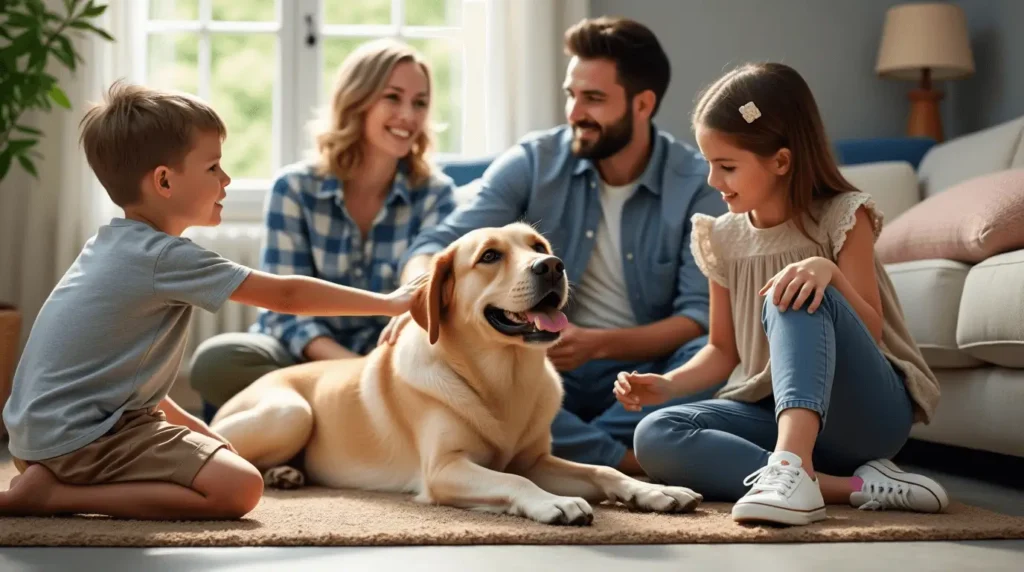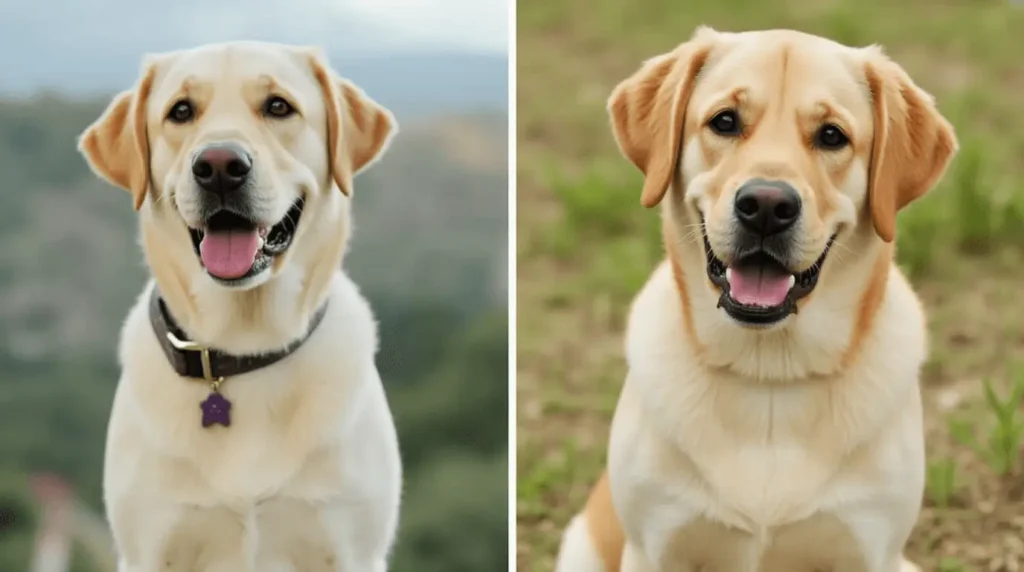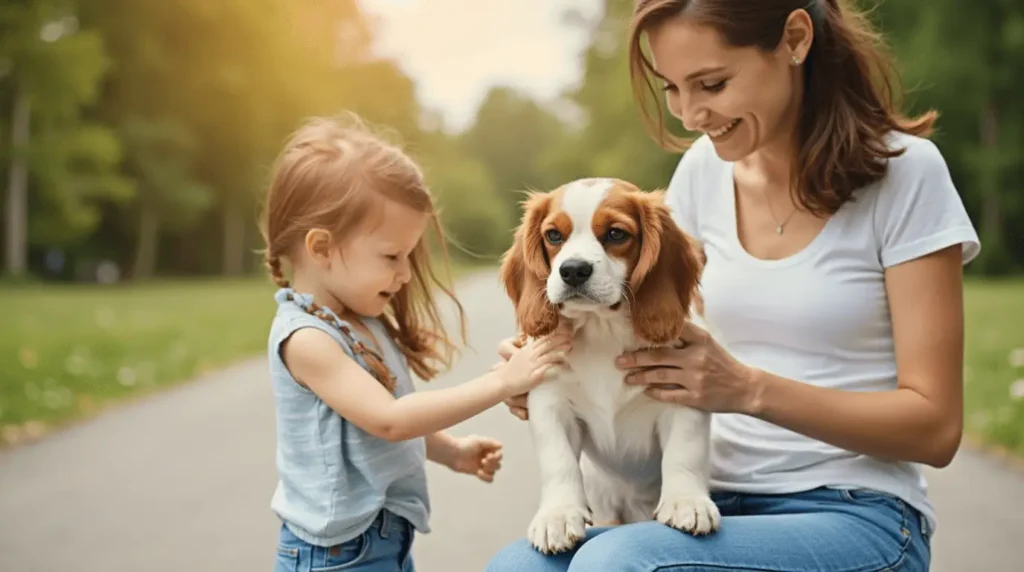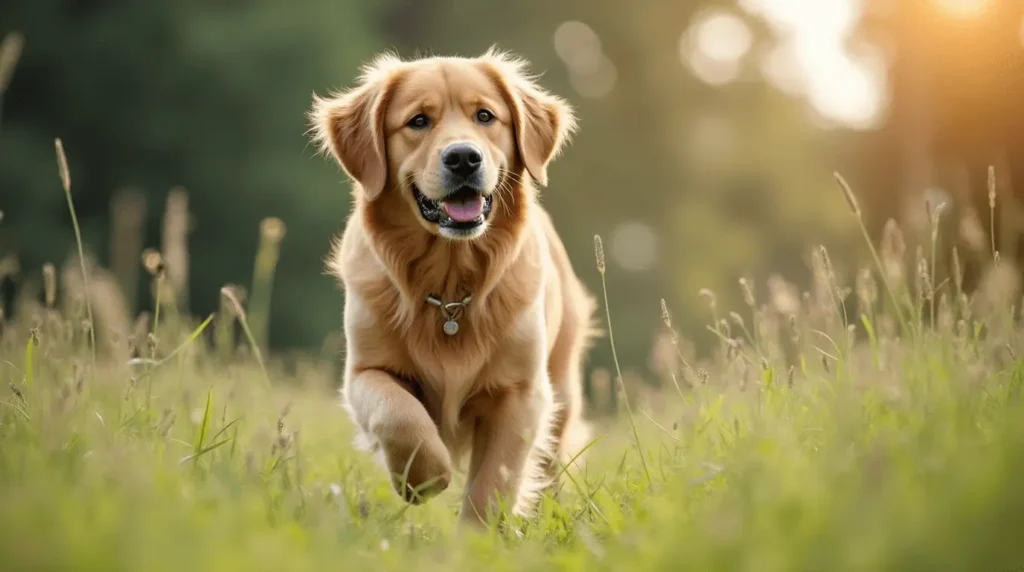Crate Training a Puppy: A Step-by-Step Guide to Success
Are you having trouble finding a safe, cozy spot for your new pet? Crate training a puppy might be just what you need. As a dog owner, I know how hard it is to make your puppy feel at home, and crate training can provide the perfect solution. Dogs naturally look for enclosed spaces to feel safe, and crate training a puppy uses this instinct to create a secure area for them. It also helps with training and keeping your home clean.
Dogs naturally look for enclosed spaces to feel safe. Crate training uses this instinct to create a secure area for your puppy. It also helps with training and keeping your home clean.
In this guide, I’ll show you how to crate train your puppy. It doesn’t matter if your puppy is a week old or older. You’ll learn how to make crate training a positive experience for your dog.
Crate training is more than just keeping your puppy in a box. It’s about making a special place they’ll love. With patience and the right steps, you can turn a crate into a cozy retreat for your dog.
I want to help you feel confident in crate training your puppy. I’ll share practical tips and strategies to make the journey easy and stress-free for both you and your puppy.

Understanding the Benefits of Crate Training
Crate training is more than just a training method. It’s a way to give your dog a sense of security and structure. Most vets and trainers say it’s great for puppies, helping them grow into well-adjusted dogs.
Safety and Security Benefits
A crate is a safe space for your dog. Dogs naturally look for small, enclosed areas to feel safe. By using a crate, you give them a place to hide from loud noises or busy times.
Behavioral Advantages
Crate training does more than keep your dog safe. It helps them learn to calm down when they’re stressed. This way, you can stop them from getting into trouble and help them feel more secure.
Aid in House Training
Crate training is key for house training. Dogs don’t like to mess where they sleep. So, the crate helps teach them to hold their bladder and go outside when it’s time.
So, crate training isn’t about keeping your dog locked up. It’s about creating a caring, structured space that meets their physical and emotional needs.

Selecting the Perfect Crate for Your Puppy
Set your puppy up for success with crate training! 🐶🏠 Follow this step-by-step guide today!
Choosing the right crate for your puppy is key. Dogs naturally seek enclosed spaces for comfort and security. It’s not just about size; it’s about creating a safe haven for your pet.
Start by measuring your puppy accurately. Experts suggest adding 3-4 inches to your dog’s height and length. This ensures they can move around comfortably. Think about your puppy’s adult size when picking a crate. An expandable crate with a divider can save money as your puppy grows.
Different materials offer unique benefits. Wire crates are great for air and adjustability. Plastic crates are tough and perfect for travel. Soft fabric crates are ideal for small, gentle dogs. Choose a crate that fits your puppy’s needs and lifestyle.
The size of the crate is crucial. For example, a 24-inch crate is good for dogs weighing 13-25 pounds. A 36-inch crate suits dogs weighing 41-70 pounds. Always consider your puppy’s comfort and growth potential.
The ideal crate is more than a container. It’s your puppy’s safe and cozy space during crate training.

Essential Crate Training Equipment and Supplies
Getting ready for puppy crate training means picking the right gear. You want a space that’s comfy and safe for your new friend. The right stuff can turn a simple crate into a cozy spot for your puppy.
Comfortable Bedding Options
Choosing a dog bed or crate mat is all about comfort and durability. Go for something soft and easy to clean that fits well in the crate. *Waterproof options* are great for house training.
Recommended Toys and Treats
Toys in the crate are good for keeping your puppy’s mind busy and calm. Pick chew-friendly toys that are the right size and safe. Small, soft treats near the crate can help with training.
The American Kennel Club says use treats that are easy to eat to keep training going.
Safety Equipment
Safety is key in crate training. Use adjustable crate dividers for growing puppies to keep the space right. A comfy collar and ID tags are also essential. Experts say the collar should fit so you can fit two fingers under it.
Quality equipment is the start of successful crate training. It helps your puppy love their crate.
Creating a Positive First Impression of the Crate
Introducing your dog to the crate needs patience and a smart plan. The first time they see it is key to their future success. Make the crate a welcoming place that makes your puppy curious and comfortable.
Put the crate in a safe spot in your home. Open the crate door so your puppy can check it out whenever they want. Curiosity is your biggest ally in creating a positive association with the crate. Add soft blankets and favorite toys to make it inviting.
Food can really help during crate introduction. Feed your puppy near the crate, moving the bowl closer each time. You can also put special treats inside the crate to make it exciting. This way, your puppy sees the crate as a good place, not a bad one.
Every puppy is unique. Some might go into the crate right away, while others need time. Never push your puppy into the crate. Use positive words and treats to encourage them to explore naturally. You want the crate to be a cozy, safe spot for your puppy to relax and feel safe.

Crate Training a Puppy: The Complete Process
Crate training your puppy is a journey that needs patience, consistency, and understanding. Every puppy learns at their own pace. My goal is to guide you in crate training effectively, making it a positive experience for your puppy.
Getting Started Right
When starting crate training, make the crate welcoming. It should feel safe and comfy. Add soft bedding and favorite toys to make it inviting.
*Puppies naturally seek protected areas for rest*. Turning the crate into a cozy space helps them adapt fast.
Building Puppy Confidence
Building your puppy’s confidence is crucial in crate training. Start with short sessions, letting them explore the crate on their own. Use treats and gentle encouragement to build positive associations.
When your puppy starts sleeping in the crate willingly, you’ll know you’re on the right track.
Progressive Training Approach
Gradually increase crate time, starting with a few minutes and moving to longer periods. Young puppies under 4 months might need breaks every 1-2 hours. Remember, crate training is about creating a stress-free experience.
It’s about making your puppy feel secure and comfortable, not just about how long they stay in the crate.
Establishing a Crate Training Schedule
Creating a consistent crate training schedule is key for your puppy’s growth and comfort. I suggest making a routine that mixes crate time with play, meals, and potty breaks. Start with short crate times during the day and slowly increase them as your puppy gets used to it.
Puppies under 6 months should not be in the crate for more than 1 hour per month of age. An 8-week-old puppy should not be in the crate for more than 2 hours. A 4-month-old can handle up to 4 hours. Make sure each crate session is positive and predictable.
It’s best to crate your puppy after they’ve been active. Potty breaks are critical – aim for at least 5 breaks a day. If you work, crate your puppy from 8:30 am to 12:30 pm with breaks in between.
A good schedule balances activity and rest. Use treats and toys to make the crate a nice place. Always praise your puppy for going in willingly. A consistent crate schedule helps reduce anxiety and promotes good behavior.
Managing Nighttime Crating
Nighttime crating can be tough for puppies and their owners. Knowing the right steps makes it easier. Place the crate in your bedroom at first to offer comfort and safety.
First Night Strategies
Getting ready for the first night is key. Up to 70% of puppies cry during crate training. Make the environment calm. Give your puppy lots of exercise during the day, at least 30 minutes.
Dealing with Whining
If your puppy whines in the crate, figure out if it’s a real need or just for attention. Young puppies might need to go outside one to two times at night. Use an alarm to wake up before your puppy, slowly increasing the time they sleep.
Using a calming pheromone diffuser or a Snuggle Puppy toy can also help. Stick to a routine. Take your puppy outside 10 minutes after they drink water. Feed them their last meal three to four hours before bed. Most puppies get used to the crate in three days to three months with patience and training.
Common Crate Training Challenges and Solutions
Crate training can be tough. Many dog owners face challenges that make it hard. Separation anxiety is a big problem. It can take days or weeks to help your dog feel better.
It’s important to know the common issues. Some dogs see the crate as a bad place. This can make them stressed. Knowing these problems helps you train better.
Problems include whining, trying to get out, and crying a lot. Some puppies might cry for hours before stopping. It’s key to stay patient and use positive methods. Don’t use the crate as punishment, as it can make things worse.
Experts offer ways to tackle these issues. Use treats, comfy bedding, and start with short crate times. Make sure your puppy feels safe and comfortable. Every dog is different, so what works for one might not work for another.
With the right approach, most puppies can learn to like the crate. It takes time and effort, but the benefits are worth it. You’ll have a well-trained, happy dog.
Crate Training Duration and Expectations
Understanding the right crate training approach is key for your puppy’s growth. Every 8 week old puppy has unique needs. Knowing how long to keep them in a crate is crucial for their training success.
Puppies can’t hold their bladder well, so they can’t stay in a crate for too long. The rule is one hour per month of age. So, an 8-week-old puppy should not be in their crate for more than 2-3 hours during the day.
Age-Appropriate Time Limits
Crate training needs patience and understanding of your puppy’s physical limits. A month old puppy has better bladder control than a younger one. You should gradually increase crate time as your puppy grows, always watching their comfort and needs.
Progress Milestones
Look for important milestones in your puppy’s crate training. At first, they might whine or seem uncomfortable. But as they get used to it, you’ll see them become more comfortable, have fewer accidents, and feel safe in their crate.
Every puppy learns at their own pace. Some adapt quickly, while others need more time and encouragement. The most important thing is to stay positive and patient with crate training.
Transitioning From Crate to House Freedom
As your puppy grows, it’s time to give them more freedom in the house. This change needs patience and watching how they behave. It’s important to see if they can handle more freedom.
Begin by letting your dog explore different parts of the home under your watch. Start with short periods of 10-15 minutes. Look for signs that they’re acting responsibly. *Consistent positive reinforcement* is crucial during this time.
Keep the crate as a safe spot even as you give your dog more freedom. Use it as a cozy place when you can’t watch them. This helps them see the crate as a safe place, not just a restriction.
Look for signs that your puppy is ready for more freedom. They should be good at going potty, not destroy things, and stay calm when alone. Puppies usually get more reliable between 4-6 months.
Every dog learns at their own pace. Some might take longer, while others adapt faster. If you see any bad behavior, go back to crate training basics.
The goal is to raise a confident dog. One who sees the crate as a safe haven, not a prison.
Maintaining Positive Crate Habits Long-Term
As your dog grows, it’s key to keep crate training going. It’s not just about the start; it’s about building lasting good habits. Your dream dog is about more than just training.
Experts say to use the crate sometimes even after you’ve trained your dog. It shouldn’t be a place where they spend too much time. But using it wisely can make it a good thing. Make sure the crate is a cozy spot, not a place of punishment.
Consistency is key in long-term crate management. Add treats or toys to make the crate inviting. Dogs like having a quiet spot to go when they’re feeling stressed or tired. This makes the crate a happy, safe place for them.
Short crate times are best. Even when you’re home, try to crate your dog for a little while. This keeps the crate from being only for when you’re away.
Good crate habits are good for your dog’s behavior. Studies show 70% of bad behavior comes from unclear rules. A positive crate relationship makes your dog feel safe and balanced.
The aim is to keep the crate a welcoming, safe spot for your dog’s whole life. With patience and positive reinforcement, you’ll build a strong, comfortable bond with their special area.
Conclusion
Crate training your puppy is a journey that needs patience, consistency, and understanding. My guide to crate training has covered the key strategies for a positive and safe space for your furry friend. Studies show that crate training can cut down destructive behaviors by up to 50% and boost house training success by 85%.
The success of crate training your dog depends on knowing your puppy’s needs. Positive reinforcement can increase good behaviors by 70%, making training more effective and fun. Remember, every puppy is unique, and it may take weeks to establish a comfortable routine.
By following this comprehensive guide to crate training your puppy, you’ll build a strong foundation of trust and security. The crate becomes more than just a confined space – it turns into a safe haven where your puppy feels protected and comfortable. With dedication and the right approach, you’ll create a positive experience that benefits both you and your new companion.
FAQ
At what age can I start crate training my puppy?
You can start crate training your puppy as early as 8 weeks old. At this age, they are ready to learn and can start to see the crate as a safe space. It’s important to introduce the crate slowly and use positive reinforcement to make it comfortable.
How long can a puppy stay in a crate during the day?
The time a puppy can stay in a crate varies by age. A good rule is that puppies can hold their bladder for about one hour per month of age. So, an 8-week-old puppy can stay in a crate for up to 2 hours. But, never leave a young puppy in a crate for more than 3-4 hours during the day. Make sure they get regular breaks and exercise.
How do I stop my puppy from whining in the crate?
First, check if your puppy’s basic needs are met (potty, food, water, exercise). Use treats and toys to make the crate a positive place. Ignore whining that’s just for attention, but respond to real distress. Gradually increase the crate time and add comfort items like a soft blanket or a toy that smells like you.
Should I feed my puppy meals in the crate?
Feeding meals in the crate can help your puppy see it as a good place. Start by placing the food bowl near the crate, then inside. This makes the crate a pleasant space for your puppy.
How do I choose the right crate size for my puppy?
Choose a crate where your puppy can stand up, turn around, and lie down comfortably. Think about your puppy’s adult size and use a crate with a divider panel. The crate should be big enough for comfort but not so big that your puppy uses one end as a bathroom.
Is it okay to use the crate as punishment?
No, it’s not okay. The crate should always be a safe and positive space for your puppy. Using it as punishment can make your puppy anxious and create a negative association. Instead, use the crate as a tool for training and management.
How long does crate training typically take?
Crate training can take a few days to several weeks. It depends on your puppy’s personality, age, and past experiences. Be consistent, patient, and use positive reinforcement for successful crate training. Some puppies adapt quickly, while others need more time and encouragement.
Where should I place the crate in my home?
Start by placing the crate in a busy area of your home. This lets your puppy see and interact with family. At night, many trainers suggest keeping the crate in your bedroom for comfort. As your puppy gets more comfortable, you can move the crate to a more permanent spot.
Can crate training help with potty training?
Yes, crate training is great for potty training. Dogs naturally avoid soiling their sleeping area. A properly sized crate can help teach bladder and bowel control. Keep a consistent potty schedule, take your puppy out right after crate time, and reward them for successful potty breaks.
What if my puppy doesn’t like the crate?
If your puppy resists, go slow and use positive reinforcement. Make the crate inviting with comfortable bedding, treats, and toys. Never force your puppy into the crate. Instead, let them enter voluntarily. Use high-value treats and patience to help them see the crate as a positive space.

